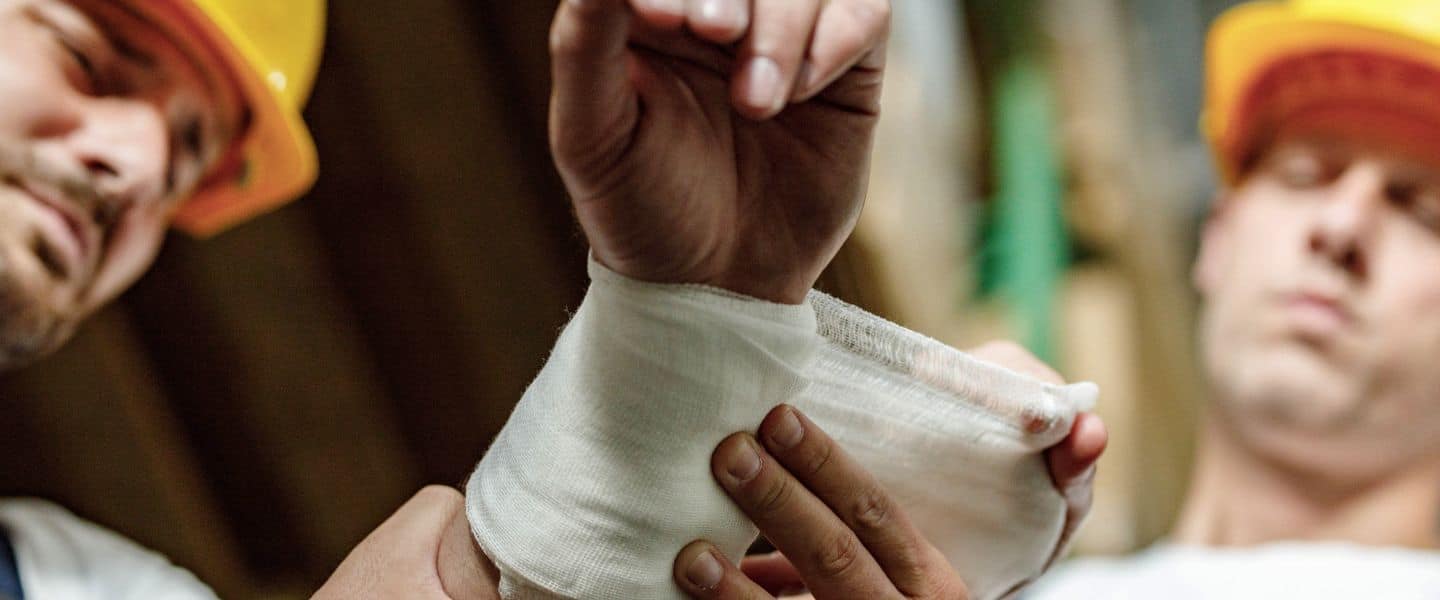
Request Free Consultation
To get answers to questions about your injury, contact Catalano Law for a FREE case evaluation. We’ll assess your case, explain your legal options, and recommend the next steps at no cost. We’re here when you need us.
Contact Form
General Contact Form

Workplace accidents can happen suddenly and without warning, but the consequences can last a lifetime. Most workers in New York turn to workers’ compensation for help after an injury because these benefits provide medical coverage and partial wage replacement, regardless of who was at fault.
However, workers’ comp rarely covers everything. It doesn’t provide compensation for pain and suffering, emotional distress, or your full lost wages. Many workers don’t realize they may have a right to file a third-party liability claim for additional compensation.
Not sure who could be held liable for your work injury? Our Syracuse worksite injury lawyers can explain third-party liability, walk you through your options, and help you pursue workers’ comp benefits alongside any additional claims.
Understanding Third-Party Liability in Workplace Accidents
A third party is any person, company, or entity that is not your employer or co-worker, who may have contributed to your accident through negligence or wrongdoing.
Workers’ compensation shields your employer from personal injury lawsuits, but third-party liability law allows you to hold other negligent parties financially accountable. This can increase your total compensation by covering damages that workers’ comp does not, such as:
- Pain and suffering
- Loss of enjoyment of life
- Full lost wages and lost future earning capacity
- Punitive damages (in cases of malice, willful misconduct, or reckless disregard)
Common Third Parties in Workplace Injury Cases
Identifying who is legally responsible for your injuries often requires a detailed investigation. Here are some of the most common third parties who may be liable:
1. Equipment and Machinery Manufacturers
If defective equipment caused or contributed to your injury, the manufacturer, designer, or distributor could be liable under product liability law.
- Example: A construction worker loses a finger because a table saw lacks an automatic shut-off. The manufacturer failed to include basic safety features or warn users about known risks, which is grounds for a third-party claim.
2. Maintenance and Repair Companies
Workplace equipment must be kept in safe working order. If a third-party contractor responsible for maintaining machines or vehicles fails to do so properly, they could be held accountable.
- Example: A forklift malfunctions due to a brake system that an outside repair company improperly serviced. If that failure led to your injury, you may have a valid claim against the service provider.
3. Property Owners or Managers
If your work takes place on property owned by someone else, such as a client’s site or a subcontracted area, and that property was dangerously maintained, the owner may be liable under premises liability law.
- Example: A delivery driver slips and falls on an icy loading dock that the property owner failed to salt. That injury could support a third-party premises liability claim.
4. Drivers in Work-Related Motor Vehicle Accidents
If you’re injured in a car crash while driving for work, and the other driver was at fault, you can pursue a personal injury claim against them.
- Example: A utility worker traveling between job sites is rear-ended by a distracted driver. Workers’ comp would apply, but the driver and their insurer could also be held liable for damages.
5. Subcontractors or Other Companies on the Jobsite
On busy worksites, multiple companies often work side by side. If another company’s employee creates a hazard that injures you, that company could be on the hook.
- Example: A subcontractor leaves tools scattered across a walkway, causing a trip-and-fall accident. This may leave the subcontractor liable.
How Third-Party Claims Work With Workers’ Compensation
You don’t have to choose between workers’ comp and a third-party claim; you can pursue both at the same time.
Workers’ compensation typically covers your immediate medical expenses and partial wage loss. A third-party claim, on the other hand, may result in a full settlement or court award for all your damages.
It’s important to know that if you receive compensation from a third-party lawsuit, the workers’ compensation insurer may request reimbursement for what they’ve already paid, a process known as a workers’ comp lien or subrogation. This is to prevent injured workers from being compensated for the same expense twice. Rather, your personal injury compensation should instead be filling in the gaps of what workers’ compensation does not already cover. A knowledgeable attorney can negotiate to help reduce the amount the workers’ comp insurer takes in reimbursement to help maximize your net recovery after a successful personal injury claim.
Why a Fast and Thorough Investigation Matters
Time is critical after a workplace accident. The longer you wait, the harder it gets to win an injury claim. Over time, memories fade, evidence vanishes, and those at fault may try to deflect responsibility.
That’s why it’s so important to work with a skilled attorney who can:
- Conduct an independent investigation
- Identify all potentially liable third parties
- Preserve crucial evidence and documentation
- Work with accident reconstructionists and industry experts
- Handle negotiations and litigation while you recover
Call Our Syracuse Worksite Injury Lawyers Today
If you’ve been injured on the job, don’t assume workers’ compensation is your only option. You may be entitled to more, especially if a third party was negligent.
At Catalano Law, our Syracuse worksite injury lawyers identify every liable party and pursue every dollar you deserve.
Don’t leave compensation on the table. Call us today for a free, no-obligation consultation to talk about your case and explore your options for recovery.

